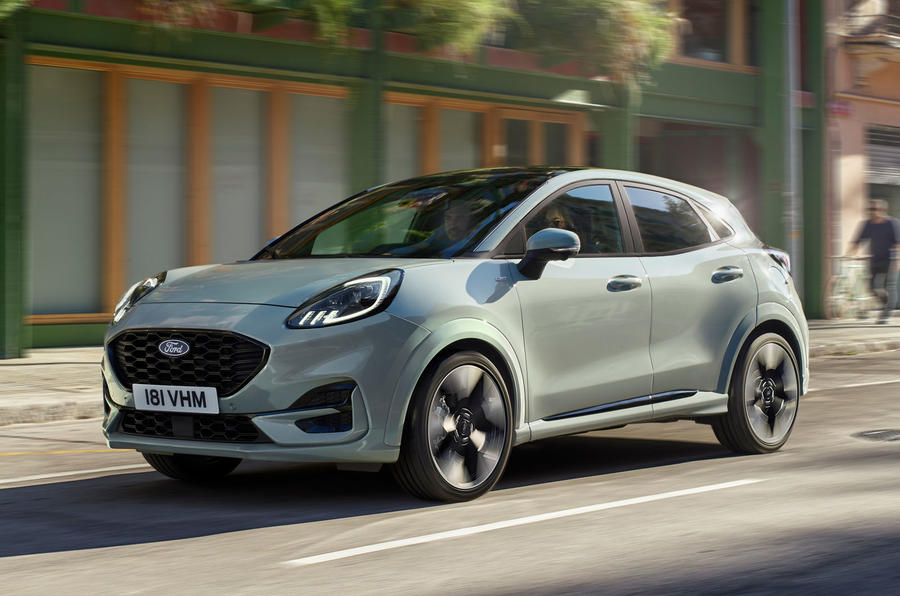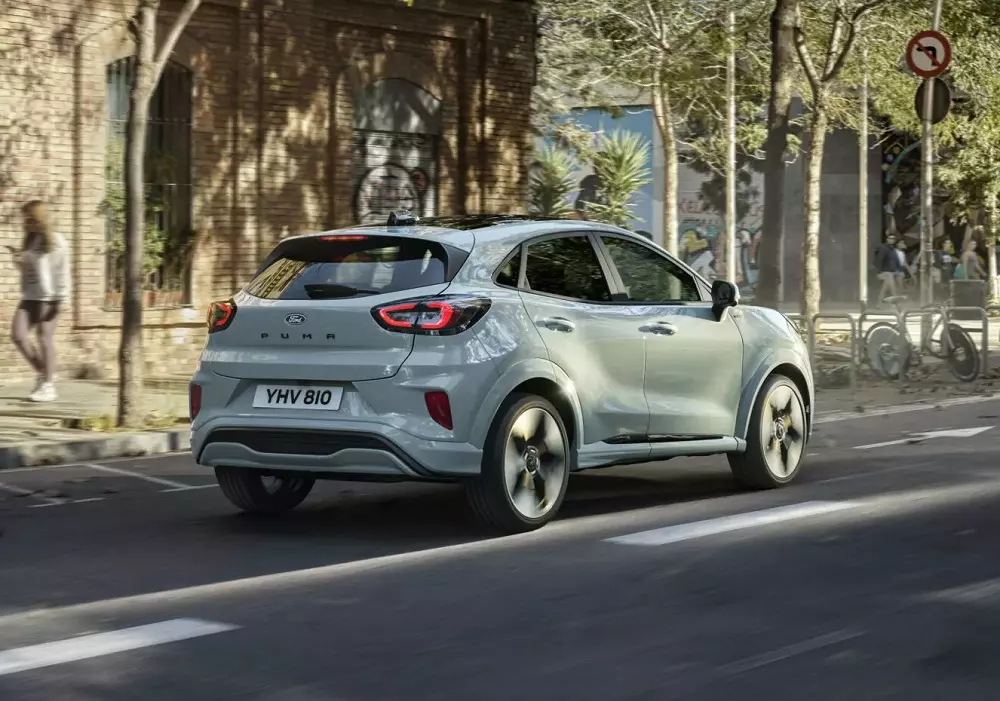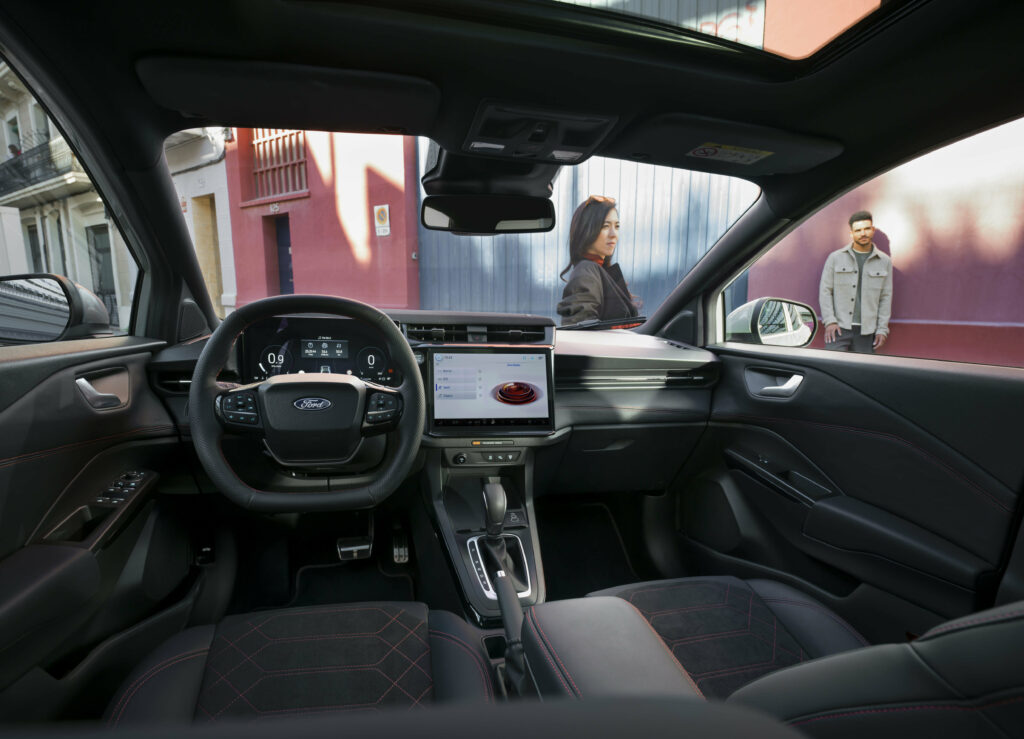The Ford Puma is a B-segment SUV model first introduced in 2019. After more than 4 years, the American car brand has just announced the facelift version of the Ford Puma 2024 – a model that replaces both the Ford Fiesta and EcoSport in Europe. After the mid-life refresh, the Ford Puma has a new entertainment system and fewer engine options.
In the European market, the Ford Puma 2024 comes in 4 trim levels, including Titanium, ST-Line, ST-Line X, and ST. The price of this B-segment SUV has not yet been announced.
In terms of exterior, the smallest SUV model of the Ford brand in Europe does not look much different from the previous version. This model is equipped with new styling inside the LED headlights cluster. Particularly, the headlamps with Dynamic Matrix LED technology are optional for this B-segment SUV model.


The Ford logo has also been moved down to the front grille. The rear end of the Ford Puma 2024 hatchback model remains unchanged, but customers can choose from 6 colors – including the new Cactus Grey color – and several wheel designs ranging from 17 to 19 inches.
Compared to the exterior, the interior of the Ford Puma 2024 has more noteworthy new features. The centerpiece is a larger touchscreen display with a size of 12 inches, integrated with the latest SYNC 4 infotainment system from Ford. Behind the steering wheel is a new 12.8-inch digital instrument cluster, similar to the one used in the Ford Tourneo Courier.
In the new version, this B-segment SUV also has additional 5G connectivity and new integrated voice control with Alexa feature. However, the downside of the Ford Puma 2024 is the absence of physical buttons to adjust the air conditioning.


The next change of the Ford Puma 2024 is an upgraded active safety technology package called ADAS. This package adds the adaptive cruise control system with new features Lane Centering and Predictive Speed Assist. Lane Centering is a feature that keeps the car in the center of the lane. Meanwhile, Predictive Speed Assist adjusts the speed of the car according to road conditions and the speed limit information provided by the traffic sign recognition system.
Ford is simplifying the powertrain options because the Puma is no longer available in Europe with the 1.5-liter 4-cylinder diesel engine. In addition, the high-performance ST model loses the 1.5-liter turbocharged gasoline engine and 6-speed manual transmission. In the future, the sport version will have a smaller 1.0-liter engine and a dual-clutch 7-speed automatic transmission. This is a considerable downgrade compared to the previous Puma ST with 197 horsepower and 320Nm of torque.
The new mild hybrid engine has a power output of only 168 horsepower and 248Nm of torque, allowing it to accelerate from 0 to 100 km/h in 7.4 seconds – 0.7 seconds slower than the 1.5-liter version. The Puma ST reaches a top speed of 210 km/h. The non-ST Puma models are also equipped with a turbocharged 1.0-liter engine with 123 horsepower and 210Nm or 153 horsepower and 240Nm.
The smaller variant of the three-cylinder engine can be equipped with a 6-speed manual transmission, with an acceleration time of 0-100 km/h at 9.8 seconds. Choosing the 7-speed dual-clutch automatic transmission shortens this figure to 9.6 seconds. The more powerful variant of the EcoBoost engine only has an automatic transmission and helps this stylish crossover reach 100 km/h in 8.7 seconds.
As promised in 2022, at the end of this year, a new all-electric version named Ford Puma Gen-E will be added to the lineup. In addition to the electric powertrain, the Puma Gen-E also features a different body kit and a closed front grille.
In 2023, the Ford Puma is the best-selling model in the UK market with cumulative sales of 49,591 units, an increase of 41% compared to 2022.












